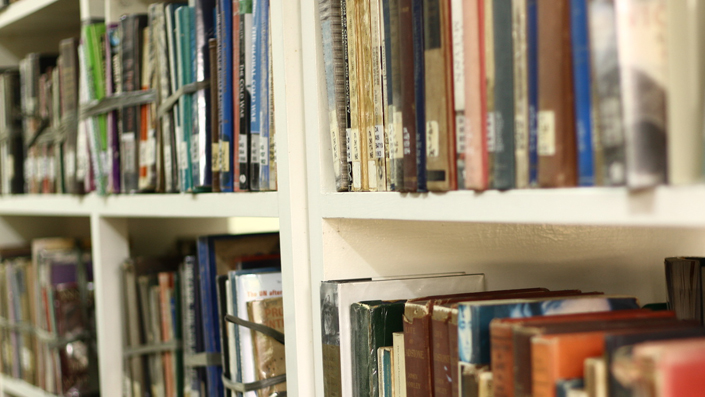
“[The book] is available, but I can’t borrow it.” Matthew Abas (II, BS-ENT) states.
“I searched the database, then it told me the reference number. I looked at a certain shelf, and it isn’t there. It’s all jumbled up,” retells Kath Sanga (II, BS-PSYC).
“They tell us to check the circulation, check the [return shelves] – we’re the ones who’re supposed to go up and down the library to look for the book,” explains Kat Borja (III, MGT).
Several DLSU students have had difficulties in acquiring reference materials from the DLSU library, which currently stores 373,789 books and plans to house more than a million books in the future.
Managing the library
In managing the library’s expanding collection, library books are assigned unique accession numbers, as standard protocol requires. University Library Director Ana Fresnido explains that the same number is used as a book’s barcode in the library catalog, which in turn links to the book. She furthers, “Through this, we are able to monitor the book’s usage and status.”
A 2002 study conducted by Fresnido, available through the Philippine Association of Academic and Research Librarians (PAARL), revealed long-running inconsistencies in the library’s accession file, a record of numbers that correspond to the order in which a book entered the library’s collection.
Due to prior constant shifting of library personnel, the accession records, in the past years, were erroneous and inconsistent with the database.
Fresnido assures, however, that the records have been reconciled over the decade. Each record was individually corrected and manually re-entered into the database.
Problematic users
The problem may not lie in the cataloging system alone. According to Circulations Librarian Elizabeth Padilla, students sometimes return books without checking them in properly. Books returned in this manner come out as unavailable in the system.
“Some people are really [careless] when they return the books,” complains Eduardo Celdran (IV, AB-POM). “They just leave it wherever, and they don’t tell you where they put it. They’re supposed to put it back, but they don’t even do that.”
“Maybe they hide the books they want to borrow somewhere in the hidden shelves,” guesses Borja.
Padilla assures that library shelves are routinely checked and restored. Those who are found accountable for destroying or losing books would be informed of their liabilities.
Even if Padilla receives reports of students who are unaware of the library’s policies, she insists that the library policies/announcements are posted in the DLSU website, the library’s social media account, and the Help Desk.
Security measures
To safeguard against book theft, checked-out library books contain a mechanism that triggers an alarm when it passes through guarded electronic gates.
Borja shares her recent experience with a book that did not consistently trigger the alarm. “I think some people are able to go out with [a] book, but the guard hasn’t checked it yet. I think that [sometimes] there’s a defect in the machine.”
Torn pages and book chapters have also become an issue in the library. Some reports confirm that several students tear pages from books to circumvent the security gates. Fresnido attests though that CCTV cameras will curb the problem. She assures there is always someone monitoring the security tapes.
Despite this, Angela, (II, AB-SPM) thinks the library’s security needs improvement. She shares that there are times that library rules are violated within the library. Angela continues that students do get caught, but enforcement is inconsistent. She wonders why administrators have failed to see them.
Political science student Celdran posits that realistically, administrators cannot monitor everything. In the big picture, security issues are isolated incidents.
Finding lost books
Consequently, books do go missing, and are difficult to recover, says Fresnido. A lost/missing book may be replaced by ordering books again. In the case of unavailable material, the library borrows from other academic libraries in the country or aboard. Borrowing, however, takes time depending on the availability of the resource.
“Some are impatient whenever a book is not found on the shelf and would demand that it be handed over to them right away,” Padilla says. To rectify this, the library provides searchers a book searching form. The book searching form is used to document a book’s title, author, and user’s contact details for follow-up if the book is found.
Chris John Lim (II, BS-ENT), however, reveals that he filled out a form in his freshman year, but the library never contacted him.
Other students report that it is easier to find a difficult book by searching the Internet for an electronic copy (e-books), borrowing/photocopying from others, or as a last resort, buying the book instead. This is especially true for general reference books typically assigned to freshman blocks.
Fresnido encourages students to direct urgent book queries through e-mail instead at [email protected]
Despite these inconveniences, students say that the library has met their needs. The library, however, needs to be more consistent with its security, and further improve its efforts to communicate with and serve users in a timely manner.
Granted that, an effective library also lies with the users and their individual responsibility to be considerate of other clients.
